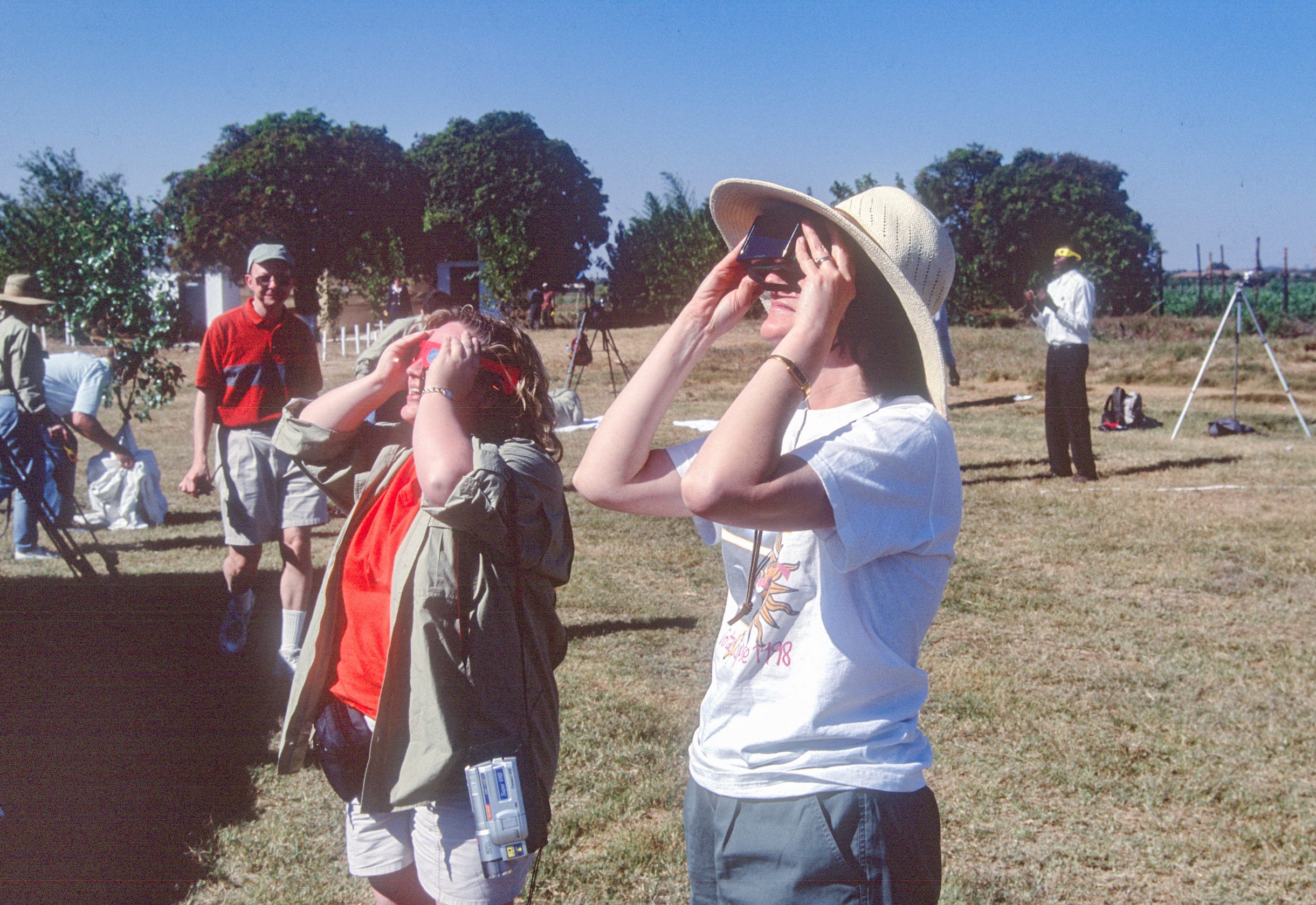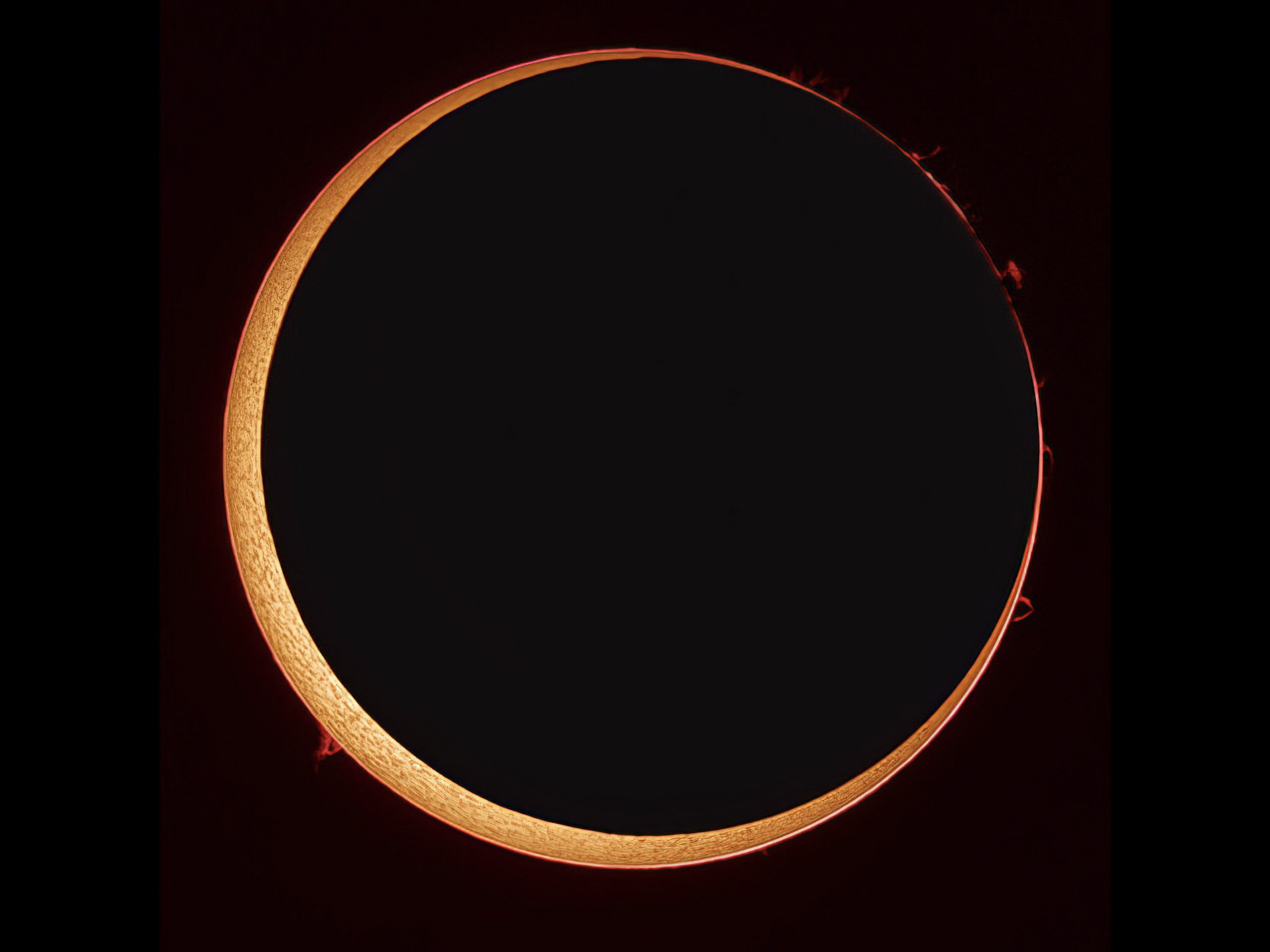
Get ready for the “Great Costa Rican Eclipse” Oct 14
As an introduction: I am an eclipse chaser. We go all over the world to see eclipses of the sun. We have chased them for 30 years from places like Mexico, Africa, Mongolia and Easter Island. In less than one year’s time, we will watch three of them. Recently, on April 19, 2023 we watched a total eclipse of the sun from a ship in the Indian Ocean off the coast of Australia. Next year, on April 6, 2024, we will watch another total eclipse in the U.S. In between is an eclipse you can witness without leaving Costa Rica.
On October 14, 2023 there will be a solar eclipse visible here in Costa Rica. It will not, however, be a total eclipse of the sun. What will occur here in Costa Rica is called an annular eclipse of the sun.
What is an annular eclipse?
An annular solar eclipse happens when the moon passes between the sun and Earth while it is at its farthest point from Earth. Because the moon is farther away from Earth, it appears smaller than the sun and does not completely cover it. This creates what is commonly referred to as the “ring of fire” effect in the sky. While not as awe-inspiring as a total eclipse, it is still very interesting and cool to witness.
Before we go on I will stress here, and again and again: you cannot look at an annular eclipse with the naked eye!
Even 1% of the sun’s radiation can permanently harm your vision.
What to expect during the eclipse in Costa Rica
At about 10:15 a.m. — plus or minus a few seconds — on the morning of October 14, 2023, all of Costa Rica will see the start of the eclipse, with the first tiny piece of the sun covered by the moon. This is called “first contact.” What follows is called a partial eclipse. Again, you can only look at the sun using special glasses, or an indirect way which we’ll talk about later.
Most of Costa Rica will only experience the partial eclipse, with the percentage of the sun increasingly obscured as you go west to east. Few places will experience more than 90%.
Recent photos from the last eclipse show the first contact, and what about 85% coverage should look like. It will be a deep “C” crescent of the sun
| City or Town | Start of Eclipse | Time at Maximum | Percent obscured | End of Eclipse |
| Tamarindo | 10:11 AM | 11:56 AM | 85% | 1:41PM |
| Liberia | 10:11 AM | 11:56 AM | 87% | 1:42 PM |
| Jacó | 10:15 AM | 12:00 | 87% | 1:45 PM |
| San José | 10:15 AM | 12:01 PM | 89% | 1:45 PM |
| La Fortuna | 10:13 AM | 11:58 AM | 88% | 1:43 PM |
| Guapiles | 10:15 AM | 12:01 PM | 90% | 1:46 PM |
On a narrow band of land on the Caribbean coast, you can experience annularity. These places are:
- Tortuguero
- Limon
- Puerto Viejo
- Cahuita
- Punta Uva
- Manzanillo
What is better, October is traditionally the driest month of the year for the southern Caribbean. But, even if it is cloudy, you can experience some of the effects of the eclipse.
At noon, the moon will totally cross in front of the sun, called “second contact,” making the “ring of fire.” The duration of the annularity will vary with how far east you can get, and it will not be long. Along the coast, Tortuguero and Limon will experience the shortest duration at only about 14 seconds. Punta Uva, where we will be, and Manzanillo will be a little over 90 seconds.
After that, the sun returns to a partial phase, called “third contact.” And at the end, called “fourth contact,” is when the last bit of the sun returns. This will be about 1:45 to 1:50 pm depending on where you are.
If you want extremely precise time and percentage information for your location in Costa Rica, another eclipse chaser friend Xavier has, for many years, made interactive Google maps for eclipses. If you want to see exactly where you live, just zoom and click. You will get start times, end times, and percentage of coverage for your backyard.
How to enjoy and safely watch the eclipse
Once again, you cannot look at the partial or annular eclipse with your naked eye; it will cause permanent damage. But there are several ways to watch the eclipse, and things you can enjoy, even if you are only in the partial eclipse areas of Costa Rica.
- Solar glasses
This is the best way to watch the eclipse. They block out 99.9% of the visible and, more importantly, 99.9% of the UV radiation. If you are heading to the US or want to ship yourself some here is the Amazon link.
They are not that expensive, so you may want to order extra and give them to a local school. I just brought back 50 of them .
The best place to buy a camera solar filter is at Thousand Oaks Optical. If you cannot order from the U.S. there are two sources to purchase them here in Costa Rica:
https://hdavila.com/2022/03/10/gafas-eclipse-solar/
https://www.cientec.or.cr/noticias/venta-de-filtros-solares-para-el-eclipse
- Pinhole cameras
You do not need glasses if you watch the eclipse in an indirect way. The most popular is a pinhole camera. There are many examples of these, all you need is a box with a pinhole on one side and a white surface on the other. The NASA eclipse site has some great examples of pinhole cameras to use.
Pinholes can be anything, even holes punched in cardboard that can project. We said hello to Costa Rica from the deck of our ship during the last eclipse and the zoom of the photo shows all the points of light are the crescent of the sun. Very cool to do, especially with a group or set of students.
- Camera filters
If you want to photograph the eclipse, you need special filters. There are two types popular: Mylar and glass. Mylar is much cheaper, but puts a green cast to the sun. Glass filters, while more expensive, give you a pure light. You can even buy a sheet of Mylar to cover your lens.
The best place to buy a camera solar filter is at Thousand Oaks Optical.
Other weird things happen during the eclipse
Shadows get crisp and otherworldly, and even the hairs on your arm are visibility enhanced. If you put out a sheet, you may be lucky to see shadow bands at the maximum point of the eclipse — wavy lines of shadows that cross the sheet. Birds will begin to call, thinking it is sunset, and animals react as if it is the end of the day.
Some solar effects may be visible during the eclipse in Costa Rica. This is not certain, but we are close to the edge of the annular eclipse, and some believe you may get to see a “diamond ring” and/or “Bailey’s beads” during annularity. Both are caused by the mountains and valleys on the moon blocking the light of the sun unevenly. It is unclear if we will see them, but watch for them if you are on the Caribbean coast.
If you want to see most of what you will experience, except totality, click this link to the latest eclipse we’ve witnessed, off the coast of western Australia in April 2023.
So, get ready, plan a group get-together for an eclipse party, and have fun watching the only eclipse Costa RIca will experience in any of our lifetimes. We will be in Punta Uva, where I booked an entire set of Cabinas for a group of us months ago. Eclipses tend to make people be filled with awe and joy, so the party afterwards is always fun. Enjoy the eclipse!
Costa Rica Map
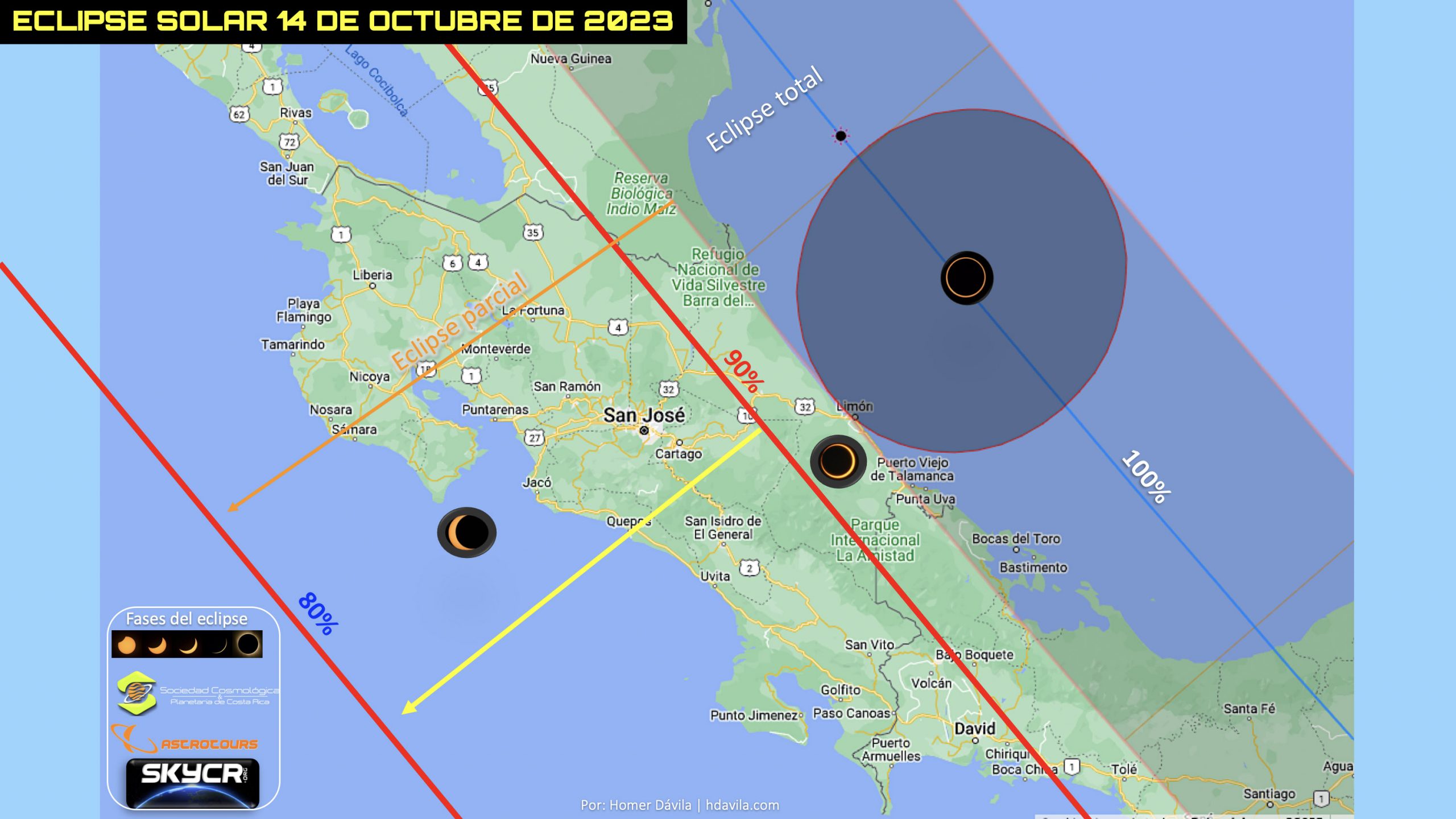
Bailey's beads and the diamond ring
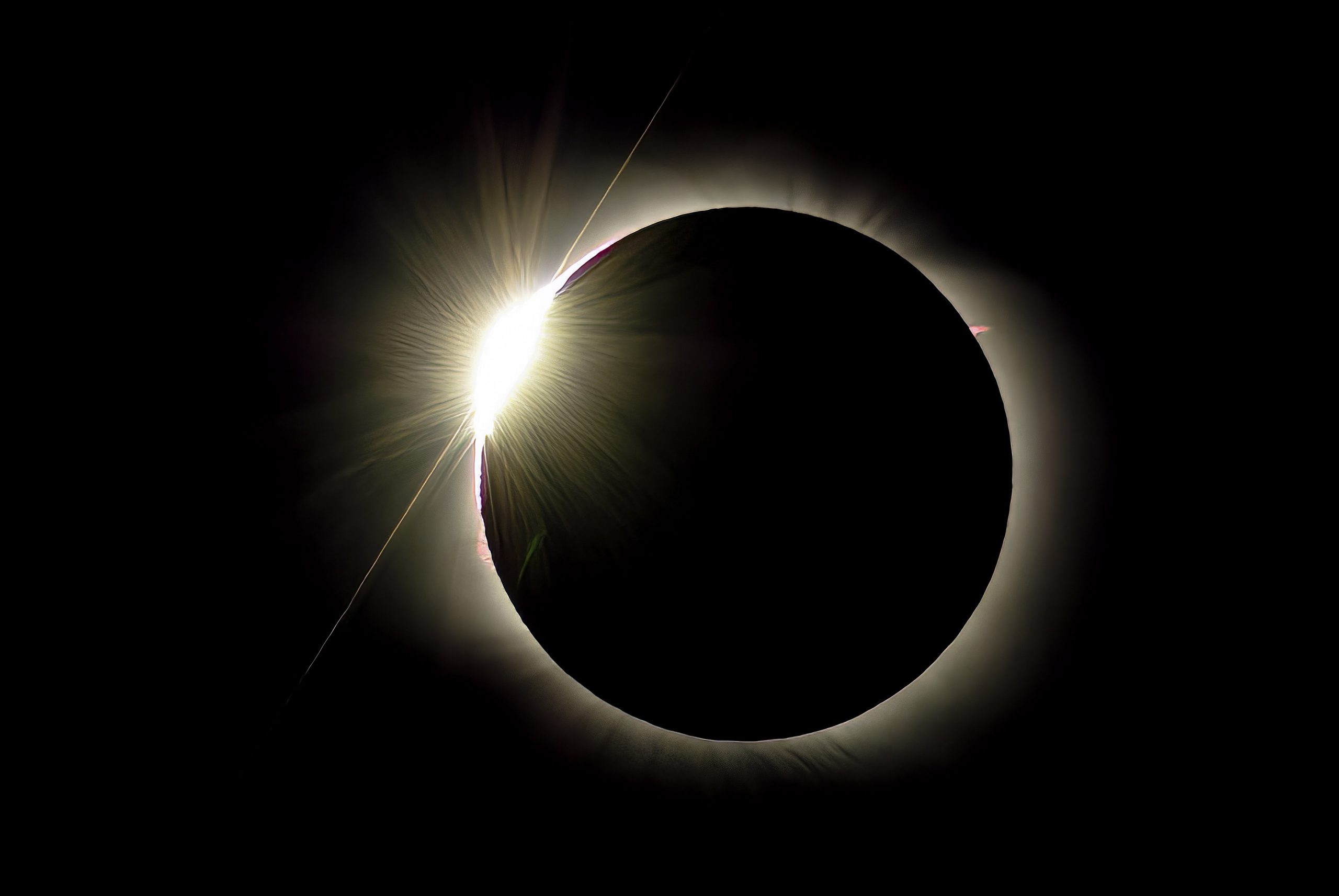
Always wear eye protection watching the eclipse
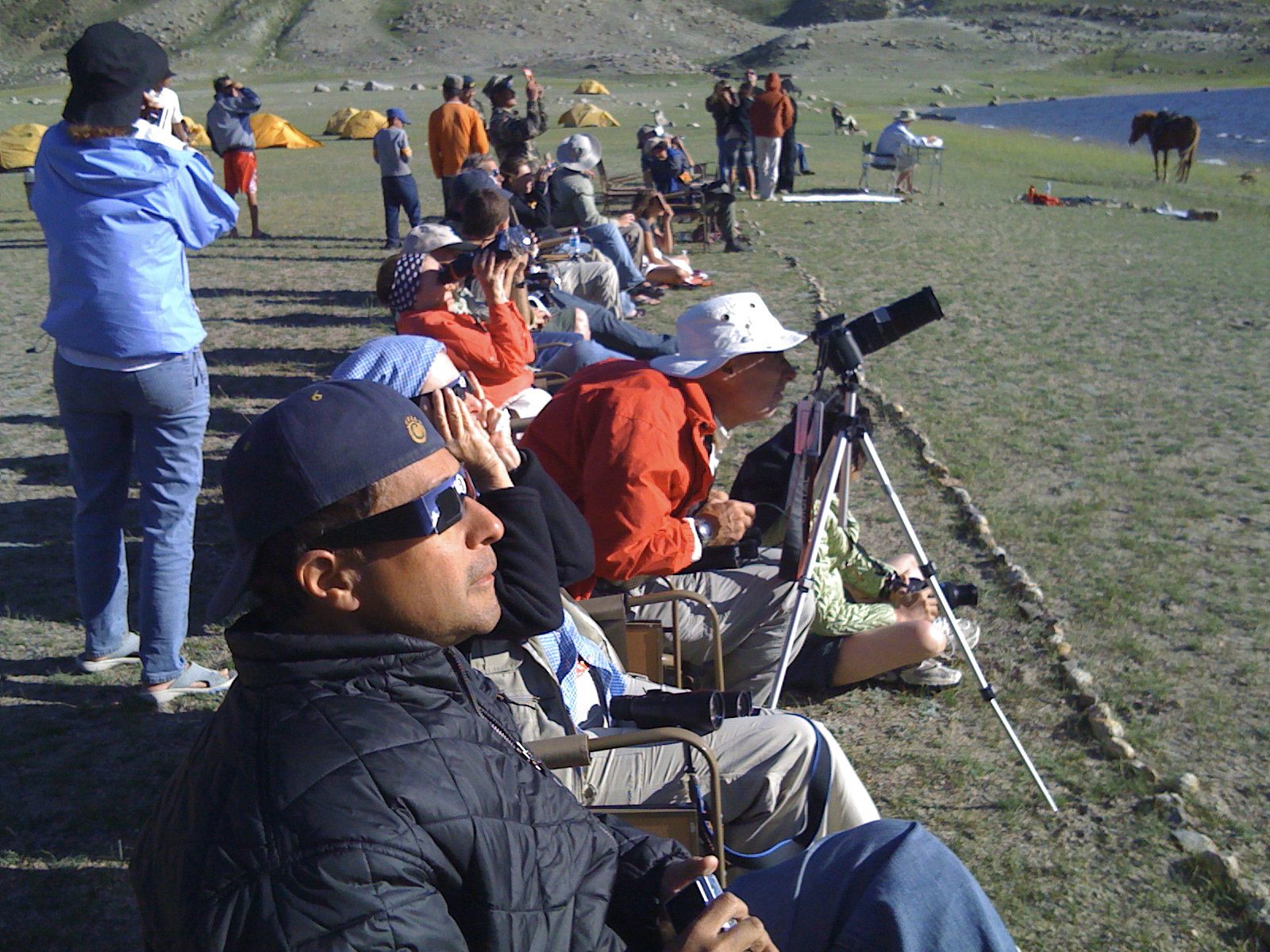
Sun crescents projected by a pinhole camera
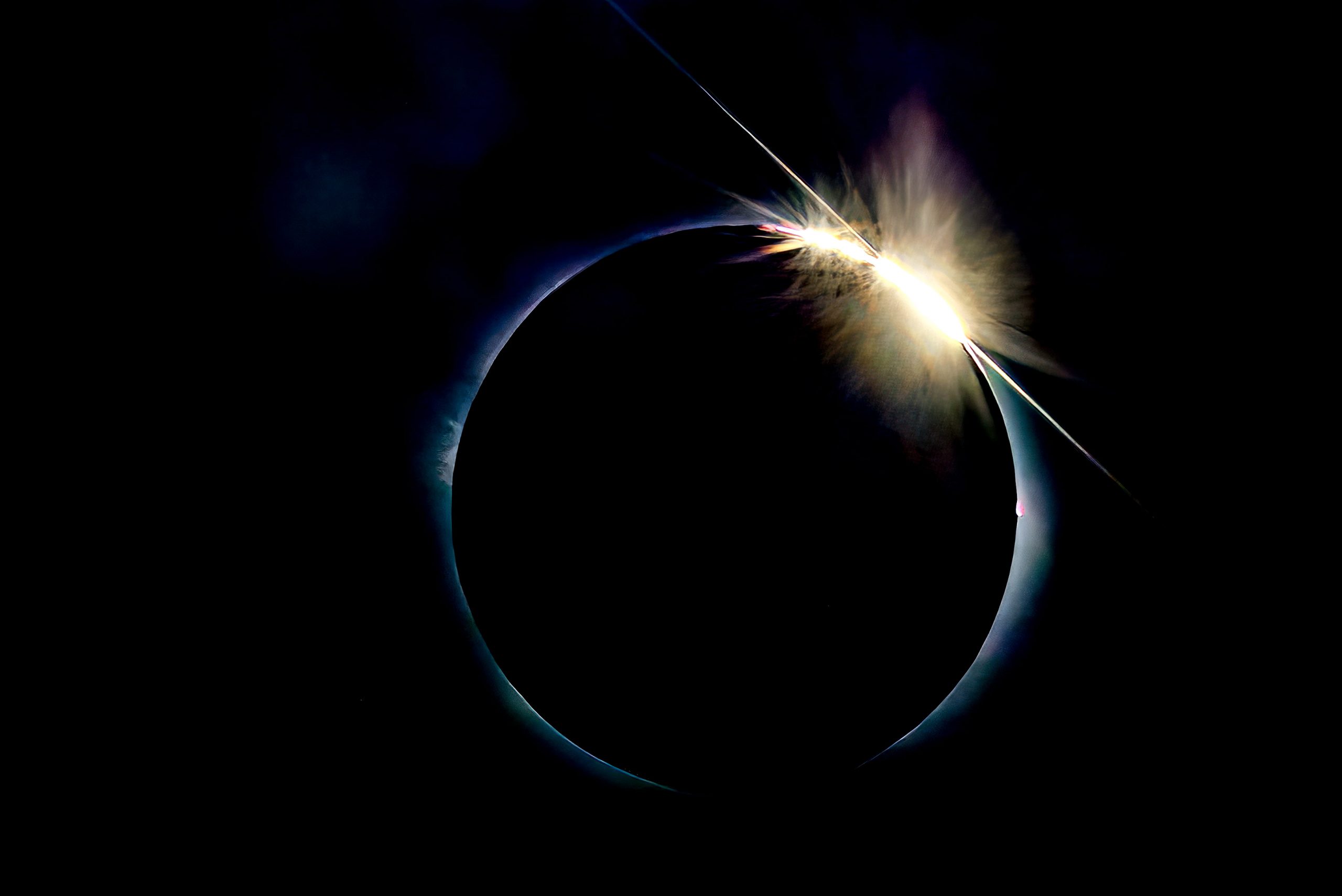
It’s fun to watch the eclipse with a group and celebrate together afterwards
